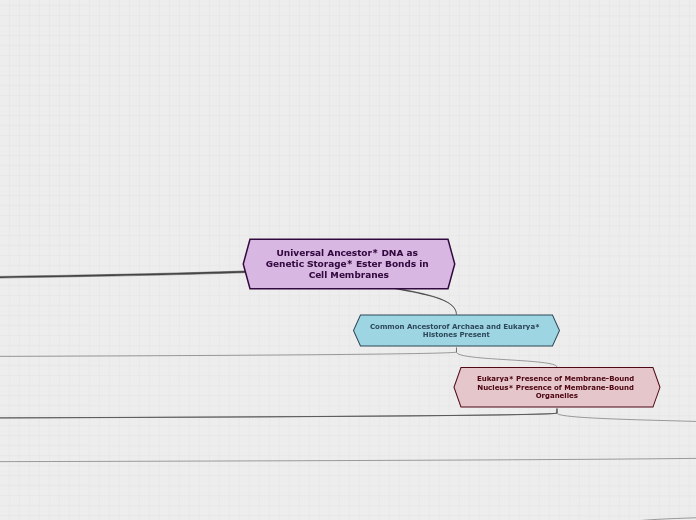по Ridham Patel 5 лет назад
442
Vertebrates

по Ridham Patel 5 лет назад
442

Больше похоже на это
Opisthokonta* Single posterior flagellum on swimming cells* Absorptive heterotrophy
Common ancestor ofFungi and Nucleariids
Nucleariids
Nucleariid(Nuclearia thermophila)
Fungi* Multicellularity* Chitin cell wall* Zygotic life cycle
Fly Agaric(Amanita muscaria)
Black Bread Mold(Rhizopus stolonifer)
Common ancestor ofAnimalia and Choanoflagellates
Choanoflagellates
Choanoflagellates(Desmarella moniliformis)
Animalia* Multicellularity* Mobility* Gametic life cycle
Eumetazoa* Tissues
Bilateria* Bilateral symmetry* Triploblasty* Cephalization
Protostomia* Spiral and determinate cleavage* Blastopore becomes the mouth
Ecdysozoa* Ecdysis
Arthropoda* Modified appendages that are jointed and come in pairs
Common ancestor ofHexapoda and Crustacea(Pancrustaceans)
Crustacea* Highly specialized appendages* Two pairs of antennae
Chesapeake Blue Crab(Callinectes sapidus)
Hexapoda* Have wings without sacrificing any legs
Monarch butterfly(Danaus plexippus)
Chelicerata* Clawlike feeding appendages which serves as pincers or fangs
Southern Black Widow(Latrodectus mactans)
Nematoda* Roundworms
Roundworm(Caenorhabditis elegans)
Lophotrochozoa* Trochophore larvae* Lophophore
Platyhelminthes* Flatworms* Acoelomates *blind gut
Rhabditophorans* Fresh water and marine species
Free-living Rhabditophorans
Pseudobiceros sp.
Cestoda* Parasites
Pork Tapeworm(Taenia solium)
Trematoda* Parasites
Sheep Liver Fluke(Fasciola hepatica)
Common ancestorof Annelida and Mollusca
Mollusca* Soft-bodied organisms with hard protective shells
Bivalva* Shell divided into two hinged halves
Soft Shell Clam(Mya arenaria)
Cephalopoda* Foot has become modified into a muscular excurrent siphon and part of the tentacles* No hard shell
Humboldt squid(Dosidicus gigas)
Gastropoda* Move at a snail's pace by a rippling motion of their foot or by means of cilia
Golden Apple Snail(Pomacea canaliculata)
Annelida* Body resembles a series of fused rings
Common Earthworm(Lumbricus terrestris)
Deuterostomia* Radial and indeterminate cleavage* Blastopore becomes the anus
Common Ancestor ofHemichordata and Echinodermata
Echinodermata* Water vascular system
Holothuroidea* Lack spines
California sea cucumber(Apostichopus californicus)
Echinoidea* No arms
Purple Sea Urchin(Strongylocentrotus purpuratus)
Ophiuroidea* Flexible arms
Serpent Star(Ophiura ophiura)
Asteroidea* Arms with tube feet that resemble suction cups
Giant Sea Star(Pisaster giganteus)
Chordata* Notochord* Hollow dorsal nerve cord* Post anal tail* Pharyngeal slits
Vertebrata* Vertebral column* Cranium* Cartilaginous skeleton
Gnathostomes* Jaws* Bony skeleton
Osteichthyes* Lungs/lung derivatives
Tetrapods* Limbs with digits
Amniotes* Amniotic egg
Mammalia* Hair* Milk* Endothermy
American Black Bear(Ursus americanus)
Reptilia
Birds* Endothermy
Roseate spoonbill(Platalea ajaja)
Crocodilians
American Alligator(Alligator mississippiensis)
Turtles
Green Sea Turtle (Chelonia mydas)
Lepidosaurs
Green Anole(Anolis carolinensis)
Amphibia
Red Eyed Tree Frog(Agalychnis callidryas)
Lungfishes
Leopard Lungfish(Protopterus aethiopicus)
Lobe-finned fishes
Coelacanth(Latimeria chalumnae)
Ray-finned fishes
Blue Tang(Paracanthurus hepatus)
Chondrichthyes* Bony skeleton lost
Great White Shark(Carcharodon carcharias)
Agnathans
Pacific hagfish(Eptatretus stoutii)
Urochordata* Tunicates
Sea Squirt(Polycarpa aurata)
Cephalochordata* Lancelets
Branchiostoma lanceolatum
Cnidaria* Radial symmetry* Diploblasty
Common ancestor ofHydrozoa and Scyphozoa
Hydrozoa* Alternate between the polyp and medusa forms
Pennaria disticha
Scyphozoa* Produce a medusa(jellies)
Moon Jelly(Aurelia aurita)
Anthozoa* Occur only as polyps(sea anemones and corals)
Elkhorn coral(Acropora palmata)
Porifera
Giant Barrel Sponge(Xestospongia muta)
Amebozoa* Movement with pseudopodia
Slime molds
Rhizaria* Filose pseudopodia
Foraminiferas
Radiolarians
Common Ancestor of Stramenopila and Alveolata* Secondary plastids
Alveolata* Membranous vesicles on cell membrane
Dinoflagellate
Stramenopila*Tripartite flagellar hair
Diatoms
Giant Kelp(Macrocystis pyrifera)
Euglenoids
Common Ancestorof Chlorophytes, Charophytes and Land Plants
Common Ancestorof Charophytes and Land Plants
Land Plants* Sporic life cycle* Embryos* Apical meristems* Gametangia* Sporangia* Desiccation-resistant spores
Common Ancestorof Seedless Vascular Plants* Lignin* Xylem and phloem* Leaves* Dominant sporophyte generation* Thick waxy cuticle* Stomata
Common Ancestorof Monilophytes, Gymnosperms,and Angiosperms* Megaphylls
Common Ancestorof Seed Plants* Seeds* Pollen* Wood* Heterospory* Ovules
Angiosperms* Flowers*Fruits* Endosperm* Ovaries
White Water Lily(Nymphaea alba)
Southern Magnolia(Magnolia grandiflora)
Gymnosperms
Bald Cypress(Taxodium distichum)
Scots Pine(Pinus sylvestris)
Monilophytes
Eastern Marsh Fern(Thelypteris palustris)
Lycophytes
Fan clubmoss(Diphasiastrum digitatum)
Hornworts
Field hornwort(Anthoceros agrestis)
Mosses
Woolly Feather Moss(Tomentypnum nitens)
Liverworts
Common Liverwort (Marchantia polymorpha)
Charophytes
Braun's stonewort(Chara Braunii)
Chlorophytes
Rhodophytes